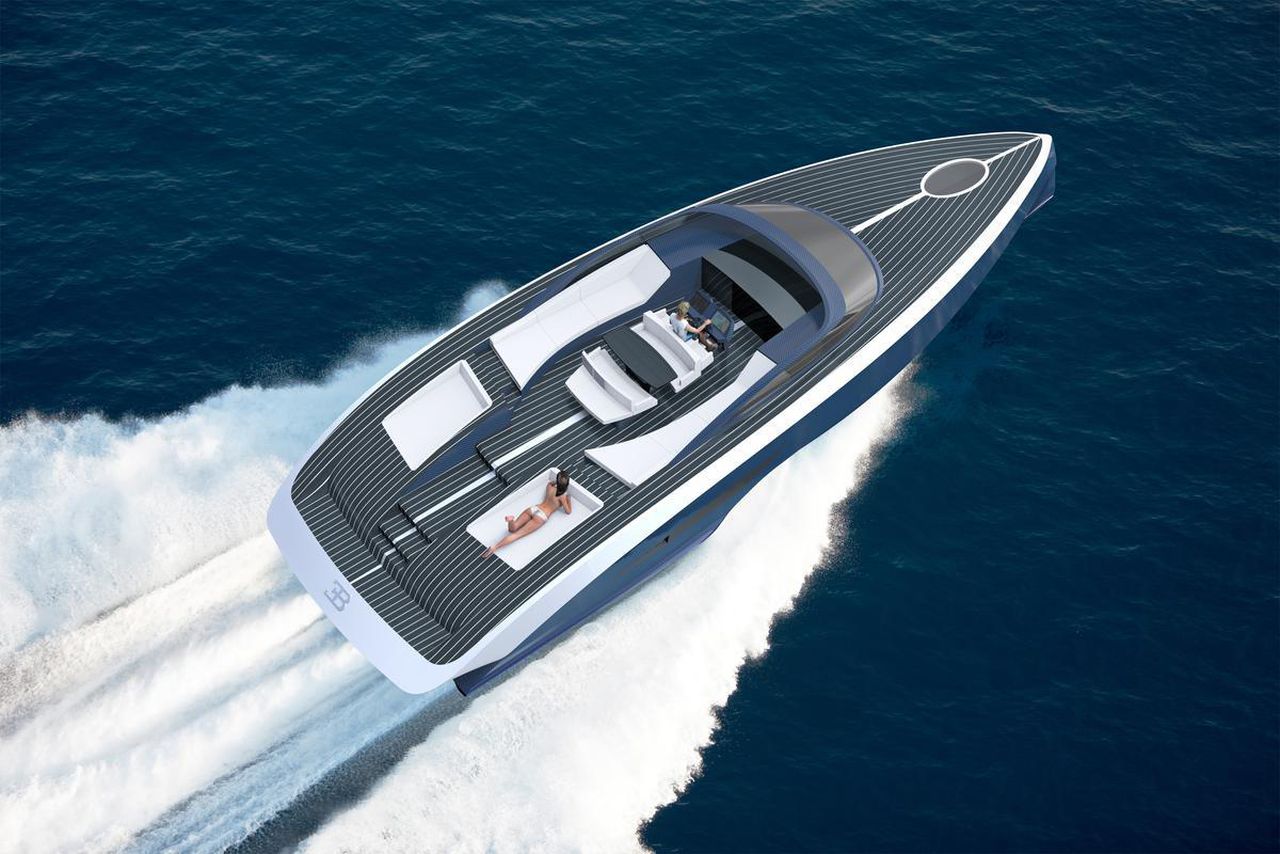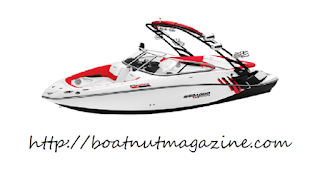Penske owned Company
MIBS 2016: Ilmor enters the sterndrive market with ‘One Drive’
Boating IndustryFebruary 11, 2016
Filed under News, Top Stories
Ilmor Marine made its entry into the recreational sterndrive market Thursday, unveiling the “One Drive” at the Miami International Boat Show.
Paired with the company’s MV8 gasoline engines, Ilmor plans to enter the recreational bowrider and cruiser markets with a comprehensive powertrain solution available in single and twin drive configurations.
“When we crafted the Ilmor ‘One Drive’ package, we wanted to give recreational boaters a driving experience never before offered in gasoline powered boats,” said Ilmor president Paul Ray. “We wanted to improve the technology, rising above traditional noisy cone clutch systems for a smooth and quiet shift, and a ride quality much more akin to luxury road cars. The ‘One Drive’ will offer boat owners overall improved performance, acceleration and efficiency – everything you could ask for, all in a beautiful package.”
The One Drive propulsion system features an electro-magnetically actuated hydraulic clutch transmission, the source of Ilmor’s unique smooth shift experience. The hydraulic clutch system quietly engages and disengages gears at two-shifts-per-second, according to the company. The twin propeller drive unit is built with precision forged gears for increased durability and is hard anodized for superior corrosion protection. All drive systems are complete with power assisted steering and hydraulic trim. The One Drive transom has a significantly larger exhaust output than comparable systems, minimizing backpressure for improved engine performance.
Powering the sterndrive package are the GM-Marine based Ilmor MV8 6.0L OPS (380 HP) and 6.2L OPS (430HP) engines, offered with electronic throttle and closed cooling systems as standard.
The Ilmor ‘One Drive’ utilizes sterndrive components provided by Yanmar Marine, already in operation with their diesel sterndrive systems
On twin engine boats, Ilmor offers an optional "One Touch" joystick system. The system includes Ilmor’s MERLIN engine monitoring display, and can be equipped with auto-pilot compatibility.
Ilmor is partnerting with Formula to demonstrate the technology on a Formula 350 CBR FX on display at Miami Marine Stadium.
“Our team at Formula is thrilled to partner with Ilmor in the launch of the ‘One Drive’ and to expand Ilmor product offerings into our hugely popular Sun Sport and CBR models,” said Scott Porter, president of Formula Boats. “Ilmor has been very professional and a pleasure to deal with, which is what you would expect from a Penske-owned company. Our decision to carry the new ‘One Drive’ systems was greatly influenced after Ilmor delivered over 10,000 reliable engines in water sports boats. We have paired the robust, saltwater resistant 430 HP ‘One Drive’ in a twin application in a Formula 350 CBR which is performing fantastically well and exceeding expectations. With super smooth hydraulic shifting, the ‘One Touch’ joystick docking system is the icing on the cake.”
Ilmor’s expansion into the recreational sterndrive market is reflective of the company’s founding principles - to constantly create new and better powertrain solutions for its customers, whether on the racetrack or on the water, the company said.
“At Ilmor, we love engines,” said Jessica Gamarra, Ilmor’s sales and marketing director. “We build superb machines, win races, bring home championships. We thrive on delivering to our customers an experience they will value and remember, whether that’s an Indy 500 race or a day of trouble-free boating with the family. Our new ‘One Drive’ is Ilmor’s next step to improve and elevate the boating experience for our customers, and to give them the confidence that they’ve made the best possible choice for themselves and their families when they power with Ilmor."
Paired with the company’s MV8 gasoline engines, Ilmor plans to enter the recreational bowrider and cruiser markets with a comprehensive powertrain solution available in single and twin drive configurations.
“When we crafted the Ilmor ‘One Drive’ package, we wanted to give recreational boaters a driving experience never before offered in gasoline powered boats,” said Ilmor president Paul Ray. “We wanted to improve the technology, rising above traditional noisy cone clutch systems for a smooth and quiet shift, and a ride quality much more akin to luxury road cars. The ‘One Drive’ will offer boat owners overall improved performance, acceleration and efficiency – everything you could ask for, all in a beautiful package.”
The One Drive propulsion system features an electro-magnetically actuated hydraulic clutch transmission, the source of Ilmor’s unique smooth shift experience. The hydraulic clutch system quietly engages and disengages gears at two-shifts-per-second, according to the company. The twin propeller drive unit is built with precision forged gears for increased durability and is hard anodized for superior corrosion protection. All drive systems are complete with power assisted steering and hydraulic trim. The One Drive transom has a significantly larger exhaust output than comparable systems, minimizing backpressure for improved engine performance.
Powering the sterndrive package are the GM-Marine based Ilmor MV8 6.0L OPS (380 HP) and 6.2L OPS (430HP) engines, offered with electronic throttle and closed cooling systems as standard.
The Ilmor ‘One Drive’ utilizes sterndrive components provided by Yanmar Marine, already in operation with their diesel sterndrive systems
On twin engine boats, Ilmor offers an optional "One Touch" joystick system. The system includes Ilmor’s MERLIN engine monitoring display, and can be equipped with auto-pilot compatibility.
Ilmor is partnerting with Formula to demonstrate the technology on a Formula 350 CBR FX on display at Miami Marine Stadium.
“Our team at Formula is thrilled to partner with Ilmor in the launch of the ‘One Drive’ and to expand Ilmor product offerings into our hugely popular Sun Sport and CBR models,” said Scott Porter, president of Formula Boats. “Ilmor has been very professional and a pleasure to deal with, which is what you would expect from a Penske-owned company. Our decision to carry the new ‘One Drive’ systems was greatly influenced after Ilmor delivered over 10,000 reliable engines in water sports boats. We have paired the robust, saltwater resistant 430 HP ‘One Drive’ in a twin application in a Formula 350 CBR which is performing fantastically well and exceeding expectations. With super smooth hydraulic shifting, the ‘One Touch’ joystick docking system is the icing on the cake.”
Ilmor’s expansion into the recreational sterndrive market is reflective of the company’s founding principles - to constantly create new and better powertrain solutions for its customers, whether on the racetrack or on the water, the company said.
“At Ilmor, we love engines,” said Jessica Gamarra, Ilmor’s sales and marketing director. “We build superb machines, win races, bring home championships. We thrive on delivering to our customers an experience they will value and remember, whether that’s an Indy 500 race or a day of trouble-free boating with the family. Our new ‘One Drive’ is Ilmor’s next step to improve and elevate the boating experience for our customers, and to give them the confidence that they’ve made the best possible choice for themselves and their families when they power with Ilmor."













